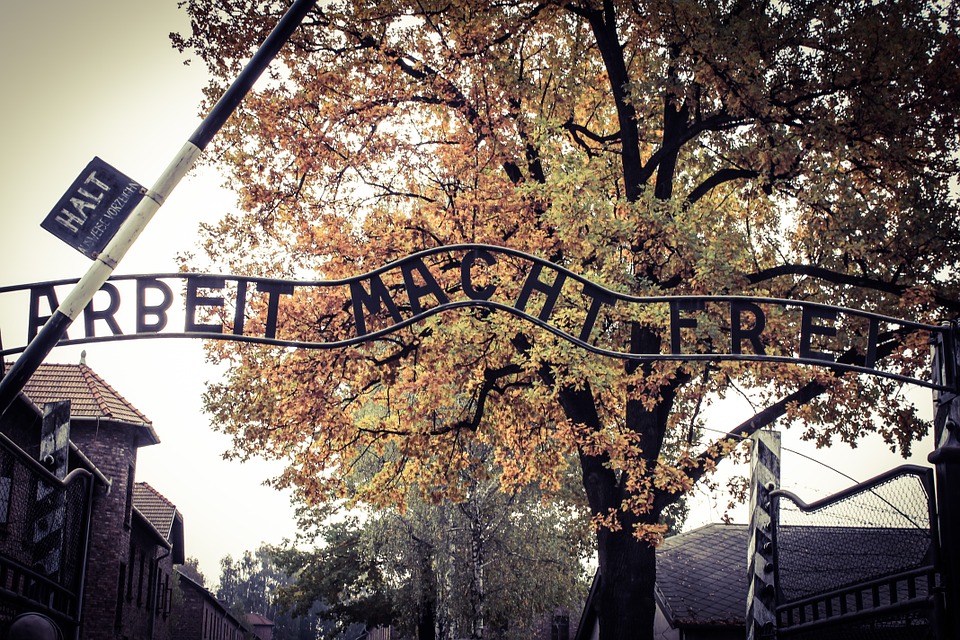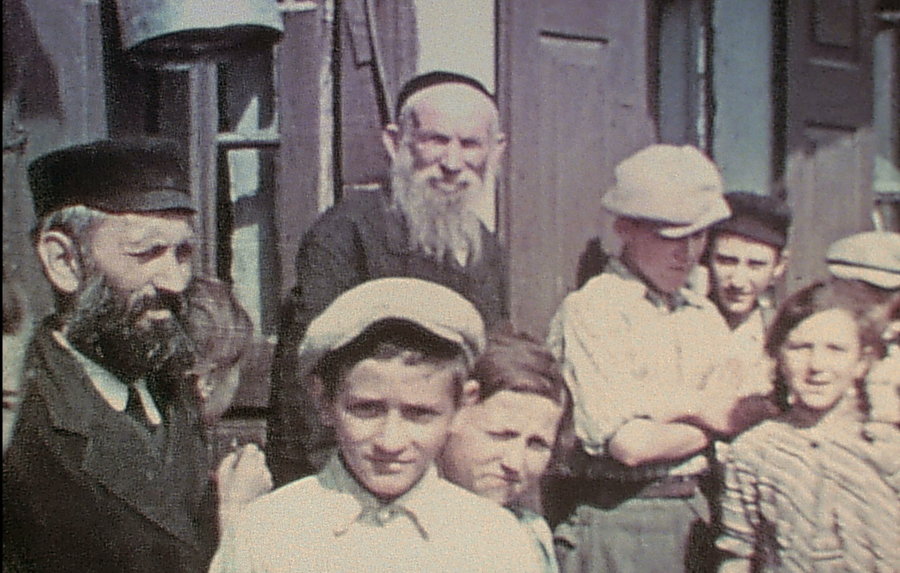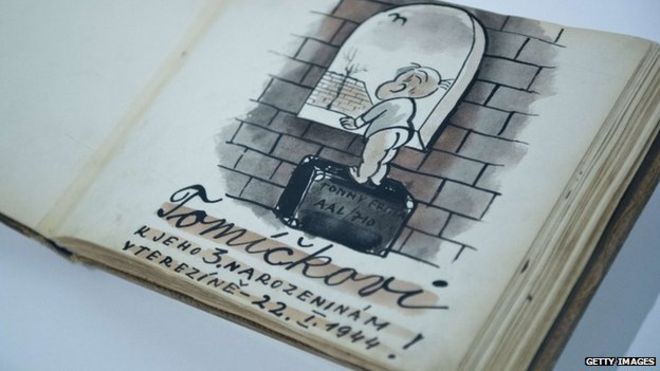Auschwitz 75th Anniversary of Liberation – Holocaust Education

Auschwitz was liberated 75 years ago on 27th January 1945. The scenes awaiting the Russian liberating red army forces disgusted them horrendously. These were forces who had battled on the fiercest battlefields. And even for them, the scenes beyond the gate horrified. Some of the liberators were Russian Jews, making their role as liberators even more poignant.
Holocaust Education is imperative to ensure these scenes aren’t repeated. In 1915 the Turks murdered Assyrians and Armenians. Hitler used the indifference of the world to these atrocities to justify that the world would not worry when he enacted The Final Solution. With the rise in antisemitism occurring globally, it is essential to educate people about the Holocaust to ensure never again is not just a slogan. With the assistance of social media, the most repugnant left and right-wing antisemites are provided a platform to disseminate hate. Hitler’s propaganda films and posters are replaced by blogs, Facebook groups, and fake news.

I was lucky enough to receive a scholarship from Gandel Philanthropy to travel to Yad Vashem in Israel to undertake an intensive 17 day Holocaust Education program. It has made me much more confident in presenting the Holocaust effectively to students.
As a tribute to the 75th Anniversary of the Liberation of Auschwitz, I want to share just a few of the critical pieces of information that might help you start to better program for the Holocaust. Or, assist you in introducing the Holocaust to your own children.
- Safely in and safely out
This idea is a significant part of the Yad Vashem Holocaust Education Philosophy. I have since also adopted this beyond Holocaust education – any time I am dealing with traumatic events, I now follow this ethos. It moves students into the space of traumatic events such as the Holocaust in a sensitive manner and brings them back out of the bleak moments of history. It entails bringing the story of the Holocaust to life through survivor testimony and ensuring you expose students to stories of liberation and a return to life.
- Humanising Jews

The Nazis went to a lot of effort to dehumanise Jews. You must present pre-war Jewish life to students. It’s funny when I teach about indigenous cultures, I always explore pre-colonisation, but when I used to teach the Holocaust, I didn’t look at their religious and secular lives. I used to start from the position of victims. This might be starting with the Nuremberg Laws, Kristallnacht, or Ghettos and concentration camps. When the Yad Vashem staff showed us that we should begin with the vibrant and diverse lives of Jews pre World War 2, my mind was blown. Yet, it seemed so obvious. If you haven’t been teaching it this way, don’t worry! Try and add a little bit in next time you teach the Holocaust.

- Don’t use graphic photos
It feels natural to show all the horrors to students – after all, won’t it shock them and make them realise how horrendous these events were? It goes back to the ethos of safely in and safely out. It is also far more effective to let the stories of victims speak about their experiences.
- Visit your local Holocaust or Jewish Museum
Take your students (or children) to your local Holocaust or Jewish Museum. There are often guides there that are Holocaust survivors. As the survivor’s age and are lost, many museums now have the next generation volunteering and sharing the story of their parents. Courage to Care can also organise for survivors to come out to many schools in Australia. There is nothing more powerful than meeting a survivor and hearing them share their story.
My mother took me to the Sydney Jewish Museum when I was about 12. We would return many times and speak with a different volunteer Holocaust survivor each time. I enjoyed listening to their stories, and even at that age knew this was important. I must remember as much of their stories as possible. Little did I realise I’d be drawing on these stories for my teaching later. My parents had lived in an apartment block in Paddington, where Holocaust survivors also lived. My mother would share the Tenenbaum’s story often at the dinner table. The Tenenbaum’s had given my parents some fancy dishes for their wedding; whenever we got these out, we were extra careful as they were “the Tenenbaum’s dishes.” Even now, my sisters and I eye these dishes off as part of our future inheritance. They are, after all, the Tenenbaum’s. Mr. Tenenbaum has survived the war eating grass and had terrible digestive issues after the war as a result. His survival had also created a health issue. The lesson was that surviving was worth it!
- Age Appropriate Information

Yad Vashem has a minimum age for children to go through the museum as it is part of their safely in and safely out ethos. Children under a certain age, should not be exposed to the full extent of the Holocaust. The picture book “Tommy” by Bedrich Fritta is a good introduction for young children. The story was created while Fritta was in the Terezin ghetto in Czechoslovakia for his toddler son, Tommy. The book is a useful tool because it concentrates on life rather than death, without ignoring the actual circumstances. It will educate but not traumatise younger children. It can also be used for older students to orientate them to pre-War Jewish life as the book narrates the various things Tommy does and might do in the future. Tommy from the book survived the war with adoptive Christian parents. His parents, however, died during the Holocaust. The book can be purchased from Yad Vashem with suggested lesson ideas for a variety of ages to introduce children to the Holocaust. High schoolers also find the story engaging and emotional when they read the forward written by Tommy.
I remember finding Holocaust stories at a very young age. As my reading age exceeded my actual age and maturity, I was reading sophisticated texts early. In hindsight, I probably found these books when I was too young to digest them fully. I remember also working out the Nuremberg laws of who would be sent away and realised although raised Christian (Mormon or LDS) I had enough Jewish heritage to end up on a transport. This was a little more than I could digest and led to some anxiety about what happened if this ever happened again.
- Don’t use The Boy In The Striped Pyjamas
This is a controversial book for many Holocaust survivors. One school of thought is anything that gets people reading about the Holocaust is good. The other school of thought is that if the survivors don’t want us using it, then don’t use the book. Their argument centers on the fact there are so many good true stories to use that there is no need to use this fictional piece. The story’s too centered on the feelings of the German boy. Nor would this situation have occurred. The image of the pajamas also suggests comfort and homeliness, and these are far from accurate. Try to use stories contributed to or written by survivors wherever possible.